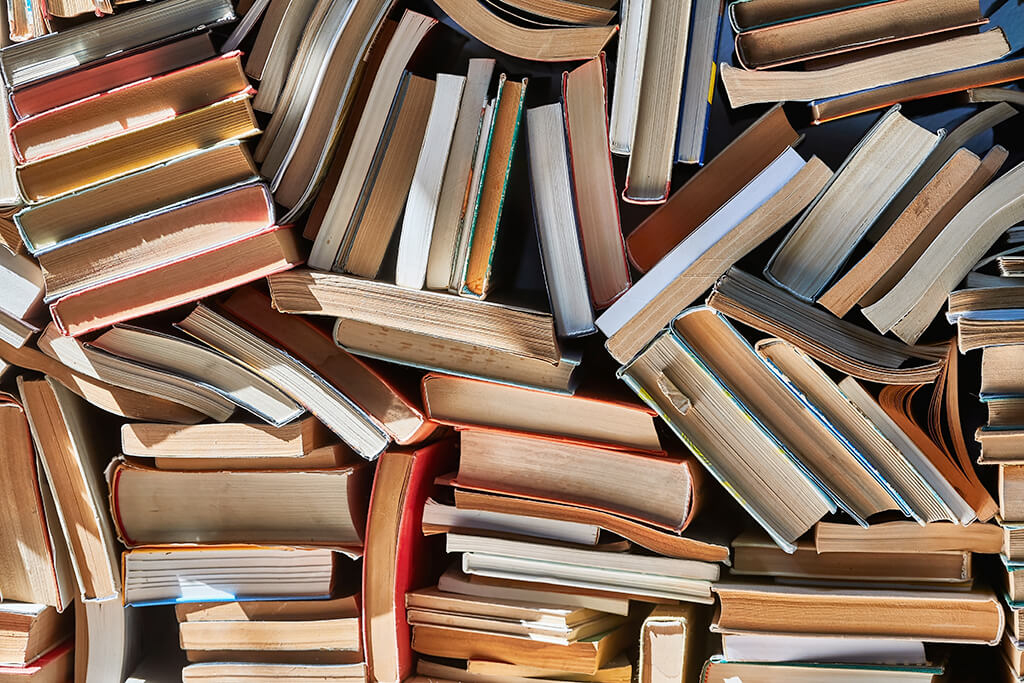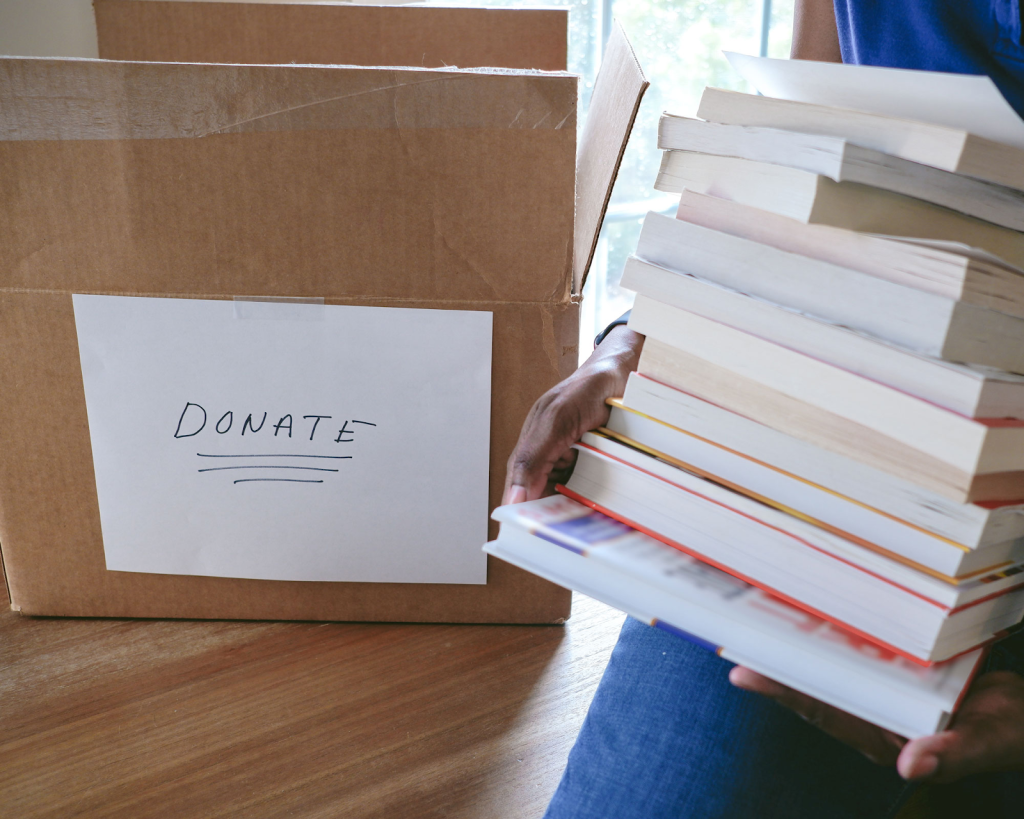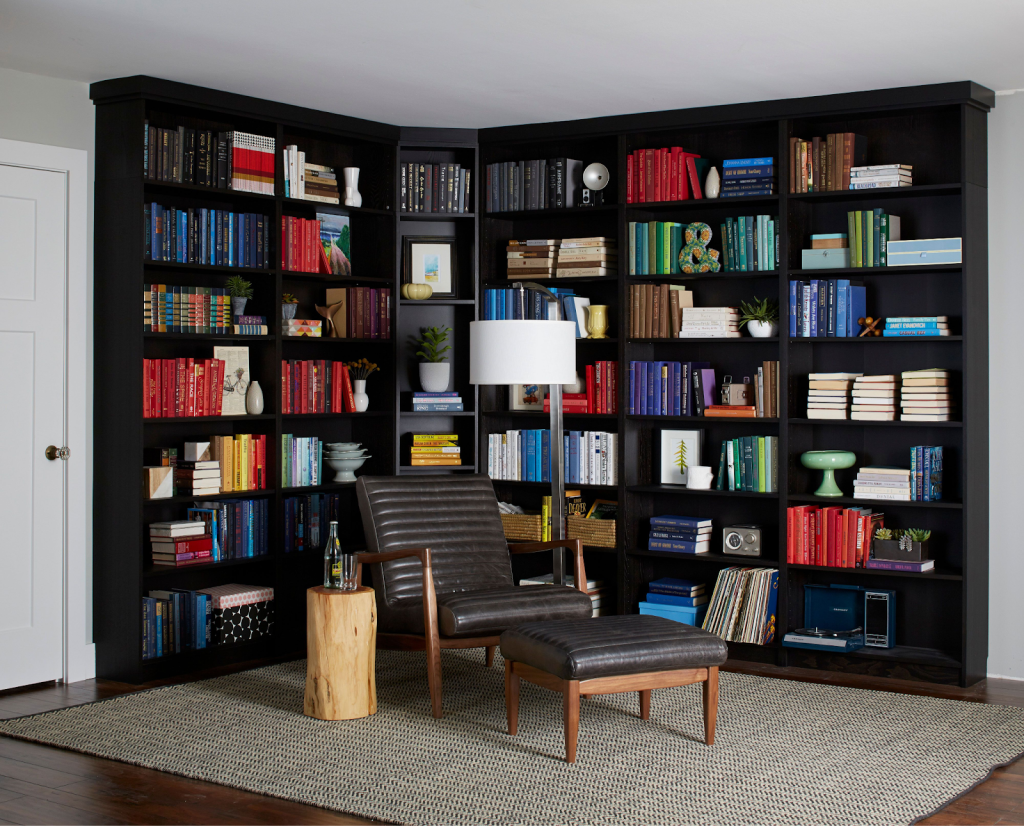
Cut shelf clutter and keep only what deserves a spot. In this guide, you will learn how to make quick yes or no passes, ways to honor inscriptions without keeping every copy, and how to group by genre and author.
We’ll show you how you can make the best use of simple keep, donate, or sell steps, and take advantage of one-in, one-out to stay tidy. These and so much more you will learn from this post!
Decluttering Books: Quick Tips
A tighter collection means you can make your choices faster, spend less time dusting, and more time reading. Use quick book decluttering tips such as taking everything from one shelf at a time and making your mind up with a clear yes or no. Honor value by saving inscriptions or taking pictures of marginalia prior to donating.
Try fresh book decluttering ideas such as capping one shelf for “to read next” so promises do not linger forever. Group by genre and alphabetize within sections to create an organized home library that actually gets used. Keep a one in, one out routine and label sections, as this will help to simplify your bookshelf upkeep in the long run.
Understanding the Emotional Attachment to Books

A favorite chapter read on a long night can establish a deep emotional attachment to books. Separating your memory reads from working reads makes letting go of books much easier because each stack serves a purpose. Tucking a note into a keepsake volume or a small album of title pages serves as sentimental decluttering that helps to trim down clutter.
You can set up a simple zone plan by genre and use. This will help in achieving mindful book organization that is sure to keep your decisions clear next time.
Evaluating Your Book Collection: Sentiment and Quantity
Lay the whole library out on a table or floor so you can evaluate your book collection. This includes everything, not just what fits on a shelf. Make three piles to create a simple book decluttering process that speeds choices and reduces waffling.
Look at condition and current listings to understand how to assess the book’s value without overpricing or underpricing. Give picks that are memory-heavy room to breathe through decluttering by sentiment, and then keep the few that still feel essential and release the rest with purpose.
Developing a Decluttering Strategy That Works for You

Set out clear objectives with the following in mind: your shelf space, daily reading time, and how often you use each title. A simple personal decluttering plan places current reads at eye-level spots and reference books at spots that are easily accessible. Assign each category a home so that you develop an organized bookshelf system that remains consistent across your rooms.
Box limits should be used for donations and the rule of one-in-one-out should be used to declutter books effectively. Keep only what fits well within the space and helps to maintain real habits, and then revisit quarterly. A named list for replacements helps avoid impulsive re-adds to a book decluttering strategy built to last.
Sorting and Categorizing Books for Clarity
Clear groups simplify your decision making and also make your shelves appear calmer. Select genres, a small Favorites shelf, and a few hobby themes, then stick to them as your go-to book sorting methods. Label the shelves and place series together. This will help you categorize your books effectively without any second-guessing.
Separate fiction and nonfiction, and then set child, craft, or travel sections so as to organize your bookshelf categories to match your reading habits. Keep a donation box nearby to handle decluttering of book piles as soon as a title no longer fits the plan.
Deciding What to Keep, Donate, or Sell

Clear the shelves in one pass with three stacks for books to keep, donate, and sell based on how each title actually gets used. When it comes to donations, follow tips such as selecting clean and gently used copies and avoiding anything that has any signs of water damage or mold.
If you are interested in selling some secondhand books, start by checking the ISBN, edition, and condition, then compare current listings so that you can set a fair price. Let your book decluttering decisions be based on relevance to your current goals and a real emotional pull.
Creating a System for an Organized Home Library

A clear system makes shelves easier to use and better to look at. Sort your nonfiction books based on subject, and then arrange alphabetically within each section. You can then go ahead to organize your fiction books based on genre or author so you can find them easily.
Labels or slim dividers create an organized home library system that anyone in the house can follow. Color or height can fine-tune sections. This is one of those home library ideas that adds polish without affecting access negatively. Break off long rows by using framed art or open space for a book display that feels very intentional.
Maintaining a Decluttered Book Collection Over Time
Seasonal check-ins work well as a simple decluttering routine that helps to prevent shelves from filling back up. Rotate a few titles into a small “read next” bin, which assists in maintaining a book collection focused on what actually gets read.
Dust, re-shelve based on category, and leave some breathing room for clean lines. These set of bookshelf maintenance tips help make your favorites easier to spot. Set an easy rule to prevent book clutter by letting one new book in only when one old book goes out.
Conclusion: Curating a Purposeful Collection
Clear shelves create space for the stories that are important today and filter the visual noise that fight for your attention. Less clutter also helps to ease stress so that your reading feels a lot calmer.
Keep a small list of decluttering tips that fit your daily life, such as one-in, one-out. Group your favorites based on theme or project to lock in your book organization goals that guide new selections. What you get at the end of the day is a simplified home library.
Clean one shelf, set a keep-donate box, and share a photo in the comments below!

